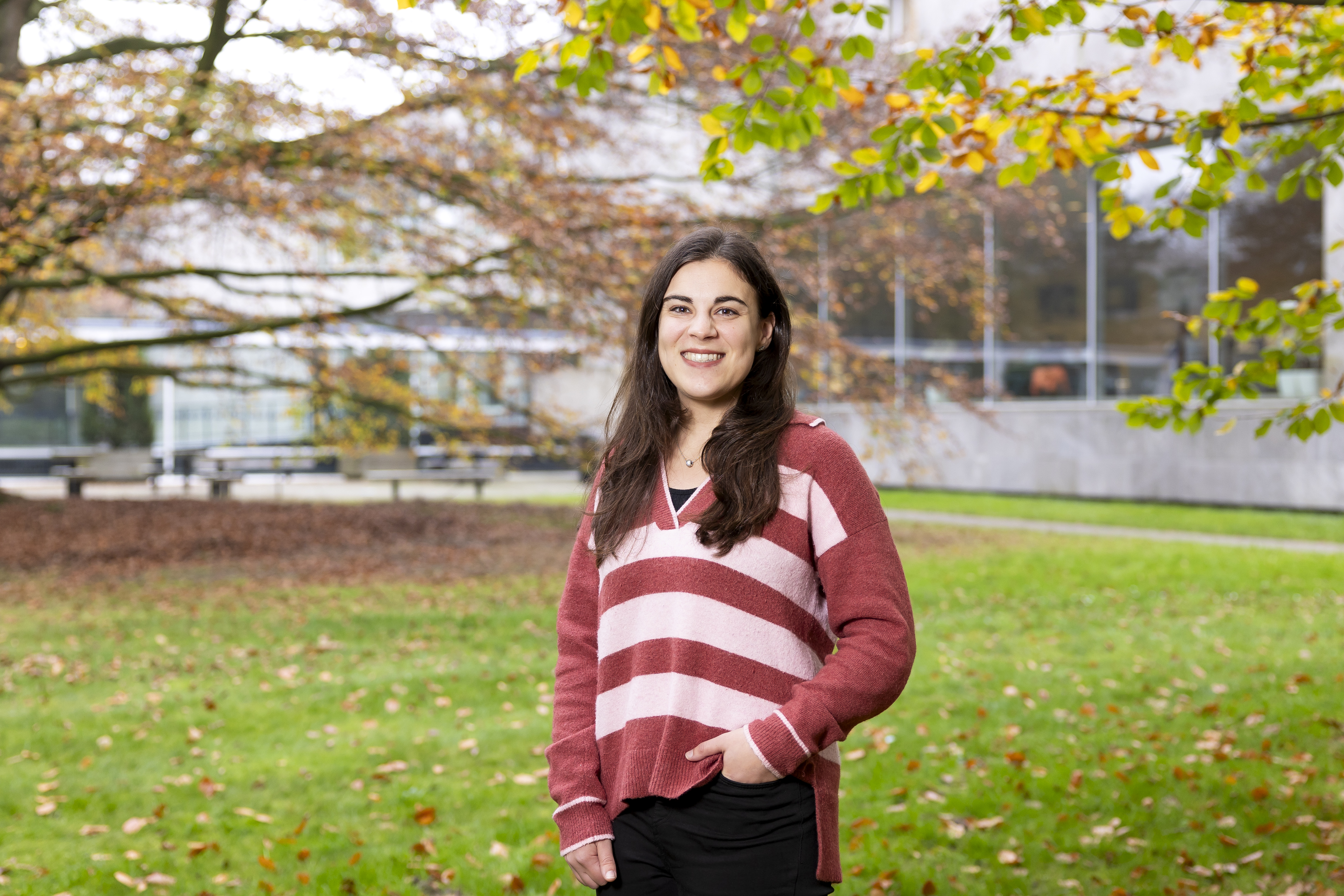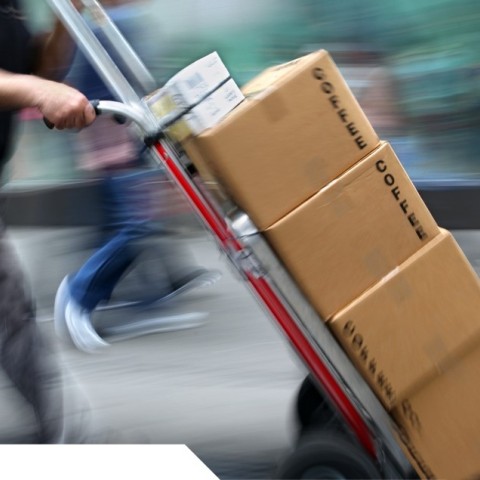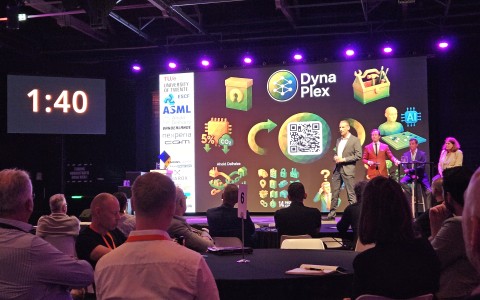More efficient grocery delivery thanks to machine learning

Liana van der Hagen researched how supermarkets can use machine learning to manage delivery time windows more efficiently. Working with Albert Heijn and ORTEC, she developed a model within the CILOLAB project that predicts at lightning speed whether a customer still fits the schedule at a given time. On Thursday 27 March 2025, she defended her thesis at Erasmus University in Rotterdam.

Suppose you scroll through your supermarket's app and place your order online. You choose a time slot, say Wednesday between 5pm and 7pm, and checkout. Nice and easy, right? At the same time, for the delivery party, the puzzle has to be put together again. Because you are not the only one who wants his groceries on Wednesday. It has to be determined immediately whether your order still fits into the schedule, so that the deliverers arrive on time at each customer within the agreed time window. Ideally without much detour or having to set off with half-empty vans. And it all has to happen in less than a second.
But how do you do that as efficiently as possible? That is a key question in the thesis by Liana van der Hagen. Previously, each order was checked whether it fitted into an existing route schedule, without recalculating the whole thing again. As a result, customers were sometimes wrongly rejected and unused space remained. In the ideal world, you calculate all possible combinations to arrive at the most optimal routes. But these are very complex calculations that can take hours. "Customers don't want to wait, they want to know now which delivery window is available," says Van der Hagen.
The PhD student investigated a new approach that uses machine learning to determine at lightning speed whether a delivery request still fits the schedule. She trained an AI model with thousands of simulations of customer requests, so the system learns to recognise patterns and can predict in milliseconds whether a time slot is feasible. "We let the model learn from the best possible schedules, and use that knowledge to quickly assess new requests," she explains. "That makes the system much faster, while maintaining high accuracy."
Fewer trips, fuller buses
The potential benefits of this approach could be great: delivery vans run fuller, more customers can be served per trip, and this would make the process both more sustainable and more profitable. Many delivery parties are still making losses now, and in a sector with tight margins, every improvement counts. Van der Hagen: "You can potentially serve more customers with the same number of vehicles, and that saves costs as well as emissions." Her analyses show that supermarkets can plan up to 18 per cent more efficiently with the model.
For Liana van der Hagen, the attraction of this research lies in working on a concrete, socially relevant problem. She deliberately looked for a PhD trajectory where she could work with practical partners. "I didn't want to build a theoretical model that disappears in the drawer, but to make something that really benefits companies," she says. The collaboration with Albert Heijn and software company ORTEC offered exactly that link between academia and practice. "And I really enjoy puzzling over these kinds of issues," says the researcher.
Directing delivery times
At the moment, the model mainly predicts whether a time slot fits, but Van der Hagen stresses that a logical next step is to also include the costs of delivery times. "Some delivery times are more sustainable because several customers are already in the neighbourhood. You'd rather encourage those," she says. By working with behavioural scientists and partners such as Albert Heijn and ORTEC, customers may soon be actively steered to such 'green time slots'. Her supervisor Niels Agatz (professor of Last-mile Supply Chain Analytics at the Rotterdam School of Management, Erasmus University, and scientific director of TKI Dinalog) was involved in a research project that showed that customers are sensitive to this.
The model has not yet been applied live in software systems, but it shows what is possible. "It is a proof of concept that shows that machine learning can make such decisions much faster than traditional methods used in practice," Van der Hagen said. Other parties are already showing interest, but it is not yet the case that planners at Albert Heijn are already using the model. "There are still steps to take before it is used in daily practice, but the potential is definitely there."
Text: Karst Oosterhuis
Over TKI Dinlaog project CILOLAB
CILOLAB is the living lab for sustainable urban logistics. Logistics service providers, hub operators, municipalities and knowledge institutions work together in this lab to develop and implement urban logistics solutions to provide zero-emission alternatives for all stakeholders in different cities. By solutions, think of different types of hubs, transhipment points, or urban distribution centres, where flows from outside the city and urban logistics are decoupled so that urban can be organised more efficiently at city level.




